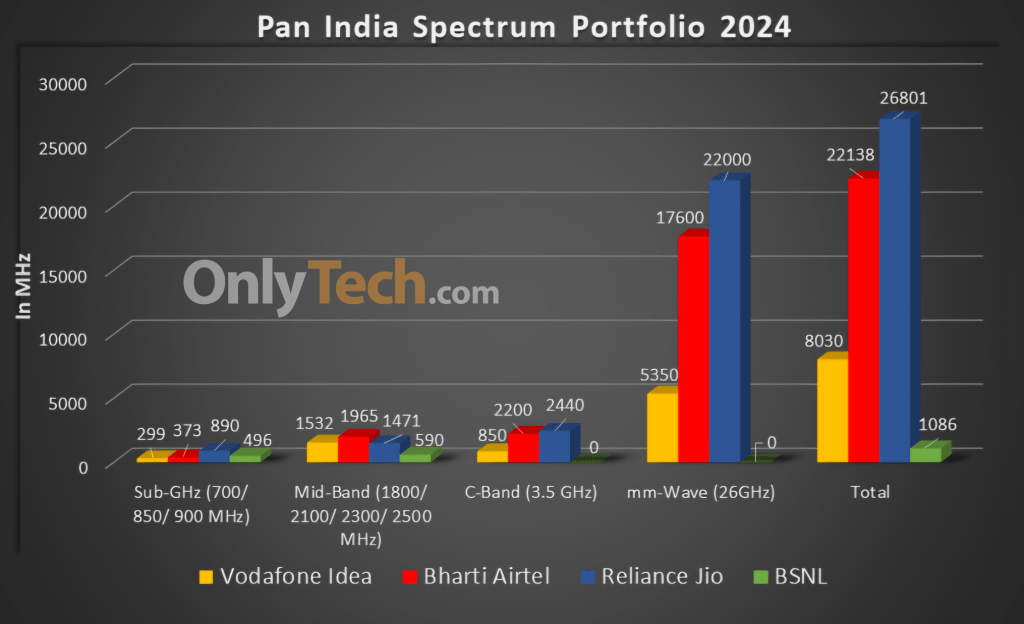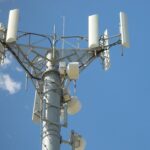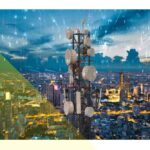Spectrum is for telecommunication what jet fuel is for aviation. Spectrum is a range of electromagnetic frequencies or airwaves that telecom companies use for establishing a connection between a cell tower and a mobile phone. The bandwidth of this spectrum is directly proportional to the speed of a wireless data network (since more data can be transmitted simultaneously through a broader data pipeline). In contrast, the frequency is inversely proportional to the coverage (since lower frequencies penetrate better through physical barriers and thus have wider coverage).
The spectrum holding data sheet embedded in this article represents the current spectrum holdings of all active telecom operators across all frequency bands across all 22 telecom circles along with their liberalisation status and expiry dates. All figures represented are in MHz. The value mentioned in the bracket beside the frequency at the base of each sheet is the band number where ‘B’ stands for 4G LTE band whereas ‘n’ stands for the corresponding 5G NR band.
The spectrum shown under BSNL and Aircel in white is reserved for the respective operators but has not yet been officially allotted to them.
Spectrum Liberalisation:
Spectrum was administratively allocated to operators in each of the 22 licensed service areas or circles prior to 2010, this spectrum is called non-liberalised and can only be used for 2G services whereas all airwaves allotted post-2010 have been through a Spectrum Auction where operators have paid the market discovered price and this spectrum is called liberalised and can be used for any technology platform 2G/3G/4G/5G. Alternatively, operators may choose to liberalise their administratively allotted spectrum by paying the market-discovered price to DoT on a pro-rata basis for the remaining validity of the spectrum.
Paired and Unpaired spectrum:
Spectrum may be paired or unpaired, bands 1/3/5/8/28 are all paired where one set of frequencies is used for uplink whereas another distinct set of frequencies is used for downlink known as Frequency-division duplexing (FDD), whereas bands 40/41/78/258 are unpaired where both uplink and downlink happens in the same set of frequencies separated by the time of uplink and downlink known as Time-division duplexing (TDD).
List of Indian FDD Bands:
| 4G LTE band | 5G NR band | Uplink frequency range (MHz) | Downlink frequency range (MHz) | Bandwidth for telecom (MHz) | Block size (MHz) |
|---|---|---|---|---|---|
| B1 | n1 | 1939-1979 | 2129-2169 | 40×2 | 5×2 |
| B3 | n3 | 1710-1780 | 1805-1875 | 70×2 | 0.2×2 |
| B5 | n5 | 824-844 | 869-889 | 20×2 | 1.25×2 |
| B8 | n8 | 890-915 | 935-960 | 25×2 | 0.2×2 |
| B28 | n28 | 723-733/ 738-748 | 778-788/ 793-803 | 20×2 | 5×2 |
List of Indian TDD Bands:
| 4G LTE band | 5G NR band | Frequency range (MHz) | Bandwidth for telecom (MHz) | Block size (MHz) |
|---|---|---|---|---|
| B40 | n40 | 2300-2380 | 80 | 10 |
| B41 | n41 | 2535-2555/ 2615-2655 | 60 | 10 |
| – | n78 | 3300-3670 | 370 | 10 |
| – | n258 | 24250-27500 | 3250 | 50 |
Spectrum caps:
A spectrum cap dictates how much spectrum a particular operator can hold in a circle for a specific band. There is a 40% cap for Sub-GHz spectrum in the 700/850/900 MHz bands combined, a 40% cap for Mid-Band spectrum in the 1800/2100/2300/2500 MHz bands combined, a 40% cap for the C-Band spectrum of 3300-3670 MHz and a 40% cap for the mm-Wave spectrum bands of 24.25-27.5 GHz. The current spectrum caps are denoted in the spectrum chart.
Overall spectrum holdings of operators (in MHz):
| Operator/Holding | Jio | Airtel | Vi | BSNL |
|---|---|---|---|---|
| Sub-GHz | 890 | 373.2 | 298.8 | 496 |
| Mid Band | 1470.8 | 1964.9 | 1531.6 | 590 |
| C-Band | 2440 | 2200 | 850 | 0 |
| mm-Wave Band | 22000 | 18000 | 5350 | 0 |
| Total | 26,800.8 | 22,538.1 | 8,030.4 | 1,086 |
Spectrum sharing/trading/leasing guidelines:
- Telecom operators holding CMTS/UASL/UL licenses can enter into a Spectrum-Sharing agreement with each other so long as both parties hold liberalised spectrum in the same band in the same circle. Spectrum sharing is possible only on a Pan LSA level in block sizes defined by DoT and only after one year of an operator acquiring the spectrum.
- Telecom operators holding CMTS/UASL/UL licenses can enter into a Spectrum-Trading agreement with each other so long as the spectrum being sold is liberalised. Trading of spectrum is possible only on a Pan LSA level in block sizes defined by DoT and only after two years of an operator acquiring the spectrum.
- Telecom operators may enter into a Spectrum-Leasing agreement only with Enterprises holding a Captive Non-Public Network (CNPN) license and not with each other. The lease may be limited to any geographic area within the LSA and for any duration mutually agreed upon by both parties. A CNPN licensee can lease spectrum from multiple operators within an LSA.
Note: We update this chart in real-time to ensure it is always up to date with the latest changes in spectrum holding. Certain human errors might have crept in during the manual compilation of the data, any mistakes/ rectification can be brought to the Team’s notice through the comments section below.








Jio is showing 10mhz in band 5(850) in Rajasthan
Can you share a screenshot of the network app where it shows this?
Wooowwww… Esmail… Where is Tarun? Without Esmail and Tarun telecom talk is big 0.
No way to add screenshot here in the comment
Hi,
We currently don’t support native image uploading. However you can hot link your screenshot here through auto image embedding by pasting image URL directly from imgur or imgbb or postimage. Paste the direct image url.
Basil
@esmail so you are no longer associated with TT)? in TT spectrum sheet is updated with “due to technical reasons this sheet will be no longer updated”.
Yes, I only put up that note on that chart, since TT isn’t cool with me writing for OnlyTech and still managing the spectrum sheet there, so I decided to move it here instead. Spectrum auction 2020 will be exclusively covered by me on OnlyTech and this chart will be updated the same way as I used to on TT.
@esmail Good to see you here (Discovered this info thanks to a kind commentator on TT). Will follow your writing. All the best.
@dragonmonk actually i thought my comment about Esmail on onlytech will not be approved but it got approved on TT.
@Vishal, On another post Nikhil asked me for this site and I’ve replied him and that reply wasn’t published then I put a comment having the screenshot of automated message and it got approved but for now whole thread has been deleted. TT and their admins, less we talk about them.
Yes the whole thread has been deleted. Guess Chakri got scared that most will follow this website and Esmail’s articles.
Poor Chakri
Ok, at last we found an alternative to TT. Chakri Kudikala of TT is very arrogant to be honest. Looking forward to your analysis of spectrum auction 2020 here. Just a suggestion…can this forum increase posts related to telecom more than now? It would be great as I’m mainly interested in telecom related news. Not much into DTH or other things.
Since the name is Dream DTH, I think they would be sticking majorly with dth and covering few snippets of telecom. TT is exclusively covering Telecom.
Hey Aniruddha, OnlyTech is a universal technology platform that covers everything from DTH to Telecom. I personally cover mostly Telecom related news while we have other authors who are more DTH focused.
Sure I’ll personally ensure that telecom oriented readers get their fair share of news to read. We honor the patronage of readers like you 🙂
Thanks mate.